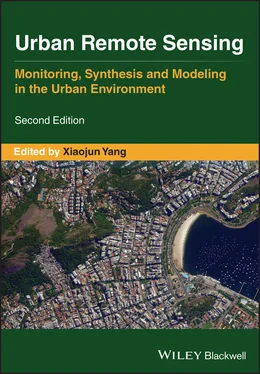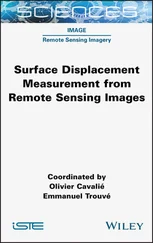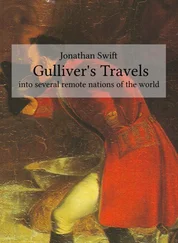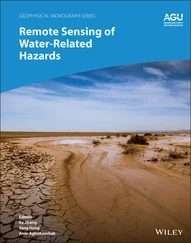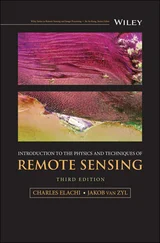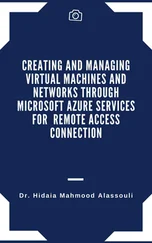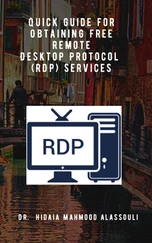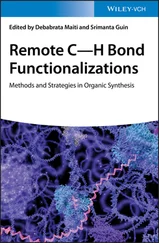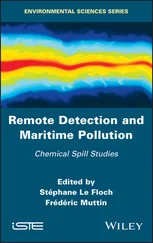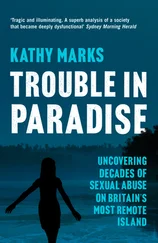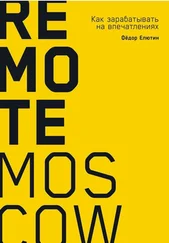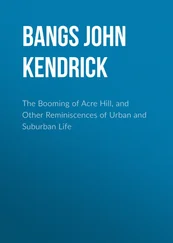1.3.2 ALGORITHMS AND TECHNIQUES FOR URBAN ATTRIBUTE EXTRACTION
With four major chapters, this part ( Part III) discusses several emerging remote sensing and machine learning techniques, such as deep learning and cloud computing infrastructures, for urban attribute extraction. It begins with Chapter 8discussing deep learning models for urban and landscape mapping from remotely sensed data with the specific attention on deep neural networks such as convolution neural networks (CNNs) and recurrent neural networks (RNNs) in addressing current land classification challenges. Two case studies using CNNs and RNNs for landscape mapping over a complex urbanized coastal area are further presented to demonstrate how deep learning models can be used to generate improved performance in remote sensing.
The other three chapters in this part are concerned with cloud computing infrastructure for large‐scale geospatial data processing and services, image endmember libraries for urban mapping, and multiscale landscape analysis for urban growth monitoring and environmental impact assessment. Chapter 9introduces the technical and scientific aspects of GEE emerging as a new cloud‐based remote sensing platform for urban and landscape studies. The authors review the use of GEE in several specific areas, such as urban extent mapping, urbanization estimation, urban ecosystem characterization, and city accessibility assessment. They further present two case studies using GEE for urban extent mapping and ecosystem characterization. Chapter 10focuses on creating generic urban libraries of reference spectral to facilitate the transferability of urban mapping methods. The authors discuss the methods for creating multi‐site reference spectra libraries and for using them to support various urban mapping applications. They introduce the idea of a Generic Urban Library (GUL) that allows to share reference spectra in support of various applications. With specific case studies, they further demonstrate the merits of sharing multi‐site reference spectra using library‐based mapping approaches. The last chapter in this part ( Chapter 11) discusses a multi‐faceted approach to address some challenges associated with scale, which includes examining the same geographic area at multiple spatial resolutions and extents based on various satellite imagery, using object‐based image analysis and ecological analysis units to minimize the modifiable area unit problem, and separately examining landscape change on social and ecological scales. By applying the approach to Stockholm, Sweden, the authors conclude that multiscale analysis can not only reveal the broader trends of urbanization and the accompanying environmental impacts but also help identify localized environmental hotspots where mitigation measures can be implemented.
1.3.3 URBAN SOCIOECONOMIC APPLICATIONS
This part ( Part IV) examines several innovative socioeconomic applications through remote sensing, and four chapters are included. It begins with Chapter 12discussing the application of remote sensing for global urban monitoring, focusing on specific issues raised by United Nations Sustainable Development Goal (SDG)11.3.1, namely, change in land consumption per capita over time in cities. The authors attempt to address this specific goal through their work in the Atlas of Urban Expansion . They firstly review the construction of a universe of cities, its stratification, and the sampling rationale, describe the data and methods used to generate urban extent and population data for their city sample, report urban extent and population growth rates, and summarize their change. An accuracy assessment component is also included.
The remaining three chapters in this part are concerned with dasymetric mapping, urban slum mapping, and urban conflict damage monitoring. Chapter 13examines the effect of image classification accuracy on dasymetric population estimates. The authors develop a binomial classification of buildings from high‐resolution remote sensor imagery. They systematically and iteratively manipulate the classifier to generate a series of outputs with various accuracy characteristics. They then generate a corresponding series of population estimates and investigate the relationship between the accuracy of classification and population estimation. Chapter 14provides an overview on the methodological advance to address several major challenges in developing a global data repository on deprived areas. These challenges include defining the relationship between concepts of a slum household and a deprived area with the information from EO; establishing the costs and benefits of different types of EO data; establishing meaningful spatial aggregation units at different scales, which are suitable to deal with uncertainties, privacy, ethics, and user needs; and developing computationally feasible, scalable, and transferable methods to produce a global data repository on deprived areas. Chapter 15focuses on remote sensing of urban conflict damage. The author discusses the linkages between urban conflict processes and urban damage patterns and proposes a theory of change to guide multitemporal satellite‐based monitoring of urban conflict. The author concludes that recognizing the various pathways that violent urban conflict manifests as damage and the means by which damage can be detected using multitemporal satellite data paves the way for further understanding of vulnerability and resilience of urban populations and infrastructure during wartime.
1.3.4 URBAN ENVIRONMENTAL APPLICATIONS
With six major chapters, this part ( Part V) showcases some latest progress in the integration of remote sensing and relevant geospatial techniques for urban environmental applications. It begins with Chapter 16presenting the first man‐made CO 2emission map based on NASA’s Black Marble Nighttime Lights Product Suite (NBM). The authors compare the performance of NBM in estimating man‐made CO 2emissions with previous NTLs and population estimators and conclude that the estimation in the new NBM‐based CO 2map is likely closer to the truth. They also discuss the advantages and challenges in using NBM for mapping CO 2from urban areas.
The remaining chapters are related to such issues as urban microclimate, air pollution, urban standing waters, urban green infrastructure, and urban sustainability. Chapter 17is concerned with thermal infrared remote sensing of urban microclimate. The authors develop a method to deal with the challenge caused by the urban geometry preventing a nadir‐looking radiometer to observe all urban facets, which makes the observed urban radiometric surface temperature ( T r) different from the urban complete surface temperature ( T c). Their method is based on numerical experiments with an urban microclimate model to help understand the thermal radiative transfer within the built‐up space and then the relationship between observed T rand T c. They further present a case study to demonstrate the methodology and discuss some issues for improving the applicability of thermal infrared remote sensing in urban areas. Chapter 18targets remote sensing of air pollution in urban areas emphasizing the fundamental considerations in transforming satellite‐derived Aerosol Optical Depth (AOD) retrievals into Particulate Matter concentrations (PM) estimations at the ground level and by pixel. The author firstly discusses the complexity of air pollution monitoring from space and then proposes a comprehensive approach being built upon advanced technological development to examine different pollution sources and possible factors controlling their spatiotemporal variability. Chapter 19focuses on remote sensing of urban after‐rain standing water bodies that can become mosquito larvae‐favorable environments and trigger disease transmission in high‐populated areas. The authors successfully develop a multilevel image analysis framework integrating multisource remote sensor data of weather and built environments from various spatial scales to detect urban standing water bodies. Such information can provide health authorities with reference guidelines to geographically prioritize the targets of mosquito larval control in urban areas. Chapter 20provides a comprehensive review on the progress in remote sensing of urban green infrastructure. The authors firstly discuss the ecosystem services provided by urban green infrastructures, which include improvement of water and air quality, mitigation of the UHI, flood regulation, carbon sequestration and storage, and biodiversity conservation. They then provide an overview of how new advances in remote sensing can enhance urban green infrastructure knowledge and relevant planning. The last chapter ( Chapter 21) discusses how remote sensing and EO can help quantify SDG indicators. The authors specifically consider UN SDG 11.7 (universal access to safe, inclusive, and accessible, green, and public spaces, etc). While aggregated green spaces can be effectively mapped and quantified by remote sensing, separating “public” versus “private” green spaces needs additional data. The authors take a close look at the relationship between urban green and urban climate as the latter can directly affect the quality of life. They survey the current remote sensing literature concerning UHI effects and cooling effects of green spaces and conclude that combining existing remote sensor data can support scientists in tackling current and future challenges.
Читать дальше
